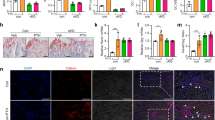Abstract.
Osteotesticular phosphatase (OST-PTPase) is a class III receptor-type tyrosine phosphatase (RPTPase). It has 10 tandem fibronectin III-like (FN-III) repeats in the extracellular region and two phosphatase domains in the intracellular region. The expression of the rat OST-PTPase gene, Esp, is restricted to osteoblasts and Sertoli cells, and the transcript level in osteoblasts is highly up-regulated by parathyroid hormone and cAMP treatment. We report here the cloning and characterization of the rat Esp gene, including a 2.9-kb 5′ flanking region sequence. Two potential binding sites for Osf2/Cbfa1, an osteoblast-specific transcription factor, are present in the promoter. Esp is composed of 35 exons, but spans merely 20 kb, making it the most compact RPTPase gene identified. Each FN-III repeat is encoded by a single exon flanked with phase 1 introns. Two phosphatase domains are encoded by 16 exons in a genomic organization similar to those in RPRPα, RPTPγ, and Ptprc genes. Esp was mapped by fluorescence in situ hybridization to rat chromosome 13q1. These results represent the first genomic structure of a mammalian class III RPTPase gene.
Similar content being viewed by others
Author information
Authors and Affiliations
Additional information
Received: 21 August 1998 / Accepted: 15 December 1998
Rights and permissions
About this article
Cite this article
Lathrop, W., Jordan, J., Eustice, D. et al. Rat osteotesticular phosphatase gene (Esp): genomic structure and chromosome location. 10, 366–370 (1999). https://doi.org/10.1007/s003359901003
Issue Date:
DOI: https://doi.org/10.1007/s003359901003




